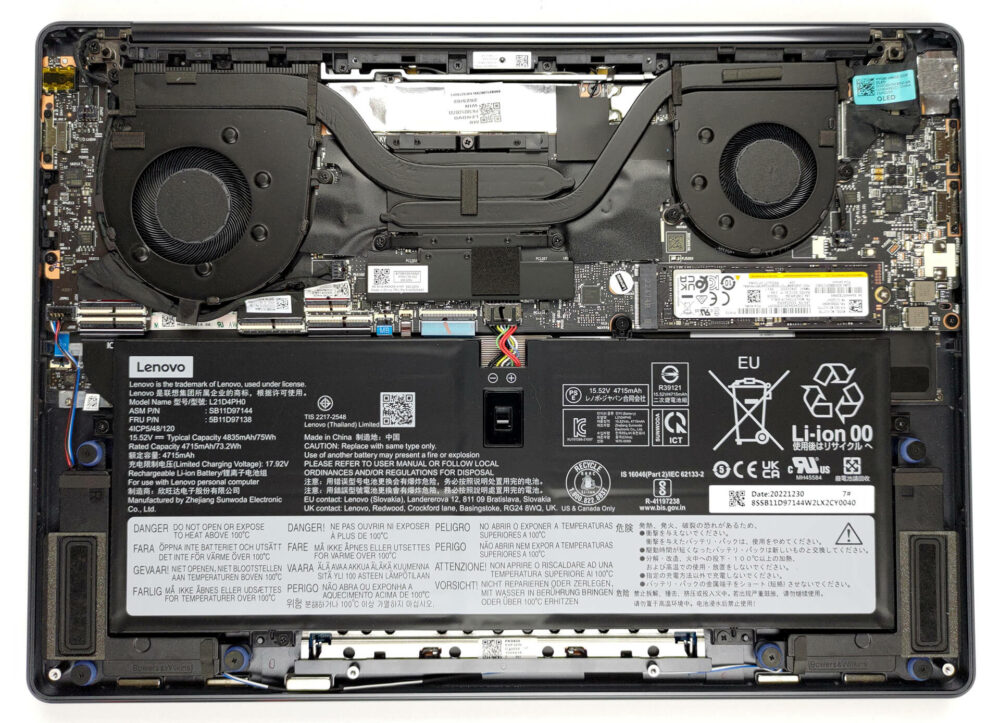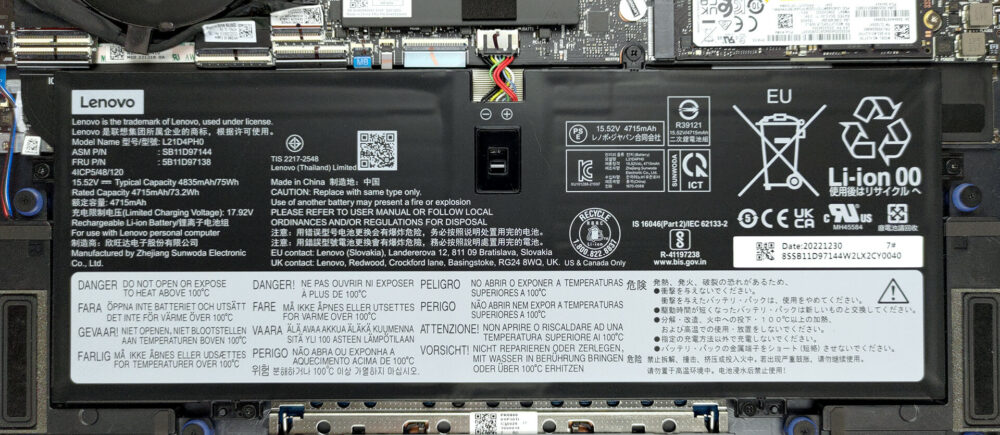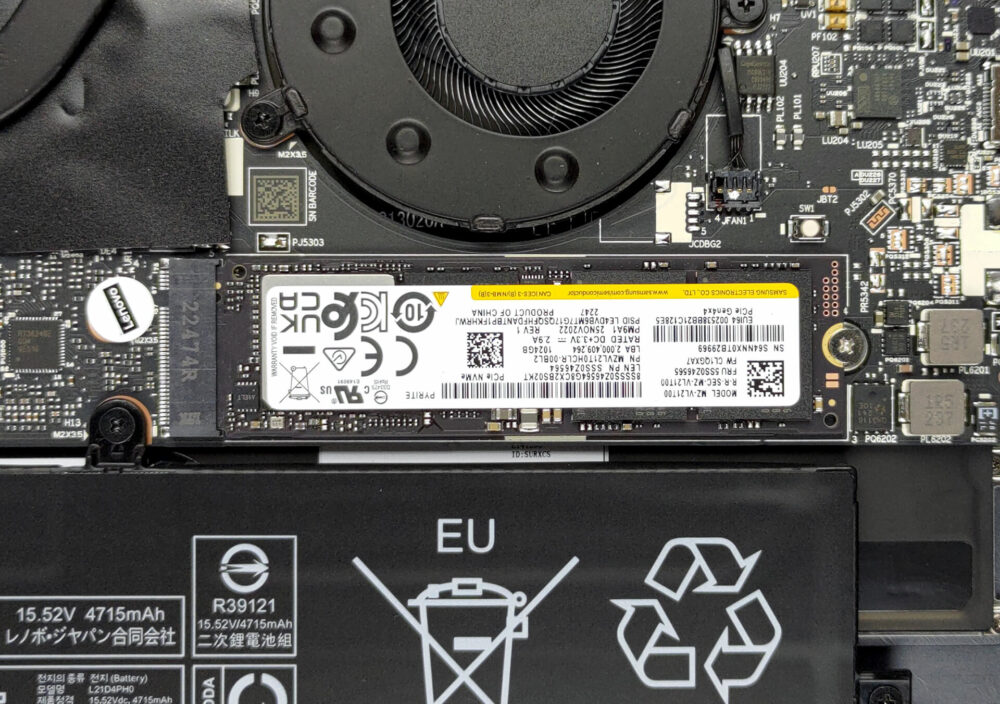Lenovo Yoga 9 (14″, 2023) review – fantastic build quality, efficiency, and performance
Disassembly, Upgrade options, and Maintenance
To access this laptop’s internals, you need to remove the back rubber foot. Then, undo the three Phillips-head screws, as well as the six other Torx-head screws. After that, pry the bottom panel with a plastic tool and lift it away from the chassis.
This machine is equipped with a 75Wh battery pack. It lasts for 11 hours of Web browsing, or 10 hours and 30 minutes of video playback. To remove it, undo the 5 Phillips-head screws that hold it in place, and unplug the battery connector.
In terms of memory, you get 16GB of soldered LPDDR5 RAM, working at 5200MHz. There is no option for upgrades. Storage-wise, there is one M.2 PCIe x4 slot, which supports Gen 4 SSDs.
As for cooling, you get two heat pipes, two heat sinks, and two fans. In addition, the VRMs are being cooled by a heat spreader.












Are the transistors on the board till poor as they were with previous ‘chinayogas’ ?
I have bought the maxed out version of this laptop a year ago (only difference is that I have the Core i7-1260P which is very similar in performance to the Core i7-1360P) for 2000€ for use in university lectures. Sadly its pretty bad: -It gets very hot just using OneNote, especially in tablet mode when you write on the screen. The screen has super high friction which makes it hard to write (nothing like the smooth feeling of an iPad or Samsung tablet/convertible). -The included pen (precision pen 2) turns itself off while writing even if its fully charged (should… Read more »
So the Yoga 9 (in this article) comes before the Yoga 7 (your buying advice)?